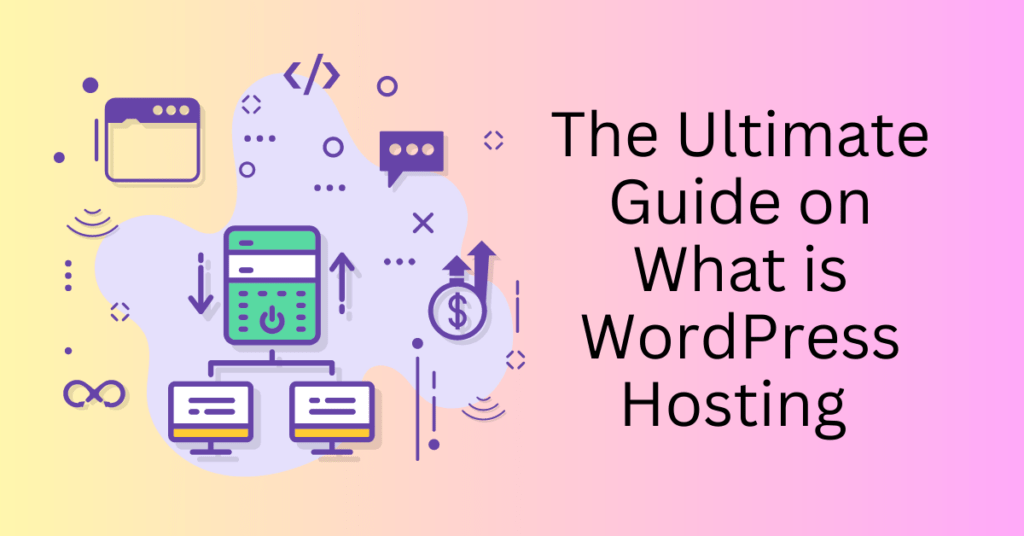The internet has experienced explosive growth over the last decade, with more businesses establishing an online presence than ever before. As online competition intensifies, having a well-designed website has transitioned from being a luxury to a necessity. This rising demand for high-quality websites presents a fantastic opportunity for creative individuals. If you have a passion for design and a talent for crafting web pages that are both functional and visually appealing, starting a web design business could be the perfect path for you.
In this post, we’ll guide you through the process of starting a web design business. We’ll cover everything from becoming your own boss and leveraging your unique skillset to helping companies succeed in the digital world. With the right approach and dedication, you can build a thriving business that not only showcases your creativity but also makes a significant impact online.
Start Your Web Design Business with Bluehost
How to Start a Web Design Business

When starting your own web design business, it’ll take time to get things rolling. Aside from developing your skills and expertise, there are several steps you must take. On the front end, you’ll need to conduct research to determine your target audience, define the types of services you plan to offer, market yourself, and nurture your young business so it can grow.
As we walk through these steps together, you’ll better understand what you’ll need and what it’ll take to thrive.
1. Develop Your Web Design Skills
Before embarking on a web design business venture, it’s crucial to lay a strong foundation in several key areas. Start by immersing yourself in the principles of UI/UX design, which are fundamental to creating engaging and user-friendly websites. Mastering these concepts will ensure that the websites you develop are not only visually appealing but also intuitive and easy to navigate, thereby enhancing user satisfaction and building a loyal client base.
In addition to UI/UX design, a comprehensive understanding of visual design principles is essential. This includes mastering colour theory, typography, and layout design. These foundational elements influence the overall aesthetic and effectiveness of the websites you create. A well-designed website relies on a harmonious blend of these principles to communicate its message clearly and attractively.
Equally important is gaining proficiency with industry-standard software tools. Adobe Creative Cloud, including programs like Photoshop, Illustrator, and InDesign, is indispensable for various aspects of web design. Photoshop is vital for photo editing and manipulation, while Illustrator excels in creating scalable vector graphics and intricate design elements. Additionally, Figma is an excellent choice for prototyping and collaborative design work, allowing you to create and refine user interface layouts effectively.
By honing your skills in these areas and becoming adept with these tools, you’ll be well-equipped to deliver high-quality web design services. This solid foundation will not only help you create stunning, functional websites but also position you as a knowledgeable and skilled professional in the competitive web design industry.
2. What You Need To Start A Web Design Business

Equipping yourself with the right tools is crucial for enhancing your workflow and delivering exceptional websites to your clients. Here’s a breakdown of some of the top tools you should consider for your web design business:
- WordPress: For those starting a new web design business, WordPress is often the optimal choice. It’s a versatile and widely-used platform that powers nearly half of all websites on the internet. Besides, one of its main advantages is that it requires no coding knowledge to get started, making it accessible for beginners. In addition, WordPress’s user-friendly interface, extensive third-party support, and abundant tutorials make it a go-to solution for many web designers.
- Elementor: To fully leverage WordPress’s capabilities, consider using Elementor, a feature-rich WordPress theme and page builder. Elementor provides a powerful drag-and-drop page builder that allows you to design and style pages by simply dragging its modules onto the canvas. This no-code approach streamlines the design process, making it easier to achieve professional results. Besides, it enables you to create and customize templates for various sections of a website, including headers, footers, posts, and search results. This level of customization ensures that your designs remain unique and avoid the cookie-cutter look often associated with template-based design. With Elementor, you can craft distinctive aesthetics for each site you build, enhancing both the visual appeal and functionality of your web designs.
Best Hosting Platform: Bluehost
Reliable and fast WordPress hosting is crucial for ensuring that your client’s websites are consistently accessible and perform optimally. Bluehost stands out as a top choice for web design businesses due to its exceptional speed, robust security features, and user-friendly management tools.
Bluehost provides a comprehensive dashboard that simplifies the management of various aspects of your client’s websites. With Bluehost, you can effortlessly handle domain management, set up email accounts, configure DNS records, restore backups, and more—all from a single, intuitive interface.

Their hosting plans start at just $1.99 per month, offering excellent value with a host of included features:
- One Click Installation: Bluehost offers seamless one-click installation for WordPress, making it very easy for anyone to start in no time.
- Site Migrations: Easily transfer existing websites to Bluehost without hassle.
- SSL Certificate: Bluehost offers a free SSL certificate for every hosting plan. Hence, you can have secure data transmission with this included SSL certificate.
- Free Content Delivery Network (CDN): Enhance website speed and performance with a CDN.
- Daily Backups: Protect your data with automated daily backups.
- Free Domain: You will get 1st year of free domain with every subscription, subject to availability for the chosen name.
With these features, Bluehost not only supports the smooth operation of your client’s websites but also provides a reliable foundation for your web design business.
Best WordPress Plugins
WordPress websites are inherently powerful, but leveraging plugins can significantly enhance their functionality and performance. Here’s a rundown of some essential plugins to consider for elevating your WordPress sites:
- Security Plugins: Protecting your website from hackers and malware is crucial. Plugins like Wordfence offer comprehensive protection by monitoring your site for vulnerabilities, blocking malicious activity, and strengthening login defences to safeguard your site’s integrity.
- Backup Plugins: Regular backups are essential to recover from potential issues. UpdraftPlus is a reliable backup plugin that automatically saves your website data to the cloud. This makes it easy to restore your site to a previous state if something goes wrong, ensuring that your data is always secure.
- SEO Plugins: To improve your site’s visibility in search engines, use an SEO plugin like Yoast SEO. This plugin helps you optimize your content for search engine optimization (SEO), making it easier to rank higher in search results and attract more organic traffic.
- Caching Plugins: Enhance your website’s speed and performance with a caching plugin such as WP-Optimize. Caching plugins store frequently accessed files and reduce page load times, resulting in a faster and more responsive user experience.
- Image Optimization Plugins: Large image files can slow down your site. EWWW Image Optimizer is an effective plugin for compressing images without compromising quality. By optimizing your images, you can improve page load times and overall site performance.
Incorporating these plugins into your WordPress websites will not only boost their functionality but also enhance security, speed, and SEO performance, providing a better experience for your users and clients.
Start Your Web Design Business with Bluehost
3. Build Your Web Design Portfolio
Once you’ve refined your web design skills, creating a portfolio to showcase your work is crucial for attracting potential clients. A personal website is an essential tool for demonstrating your design talents, instilling confidence in potential clients, and allowing people to preview your design style. To highlight your versatility, it’s important to include a range of projects that cater to different industries and design aesthetics, rather than sticking to a single style. This will showcase your ability to adapt to various client needs and project requirements.
One of the major advantages of using WordPress for building your portfolio is its cost-effectiveness. The WordPress software itself is free, which helps keep your initial expenses low. To get started, you’ll need a few key components:
- Domain Name: Choose a memorable and relevant domain name that reflects your business’s niche. Registrars like Namecheap offer top-level domains, such as .com, starting at approximately $5.98 per year.
- Hosting Provider: Opt for a reliable managed hosting provider like Bluehost. Their plans start at $1.99 per month and come with numerous benefits, including an SSL certificate, daily backups, site migration, and robust security features.
- WordPress Theme: You can always start with the Astra theme which is free and comes with different templates to get you started. Together with the Elementor website builder, it makes it easy to customise and build your dream website.
- Optional Plugins: Enhance your site’s performance and functionality with additional plugins. For example, WP Rocket can optimize your website’s speed and performance, helping reduce bounce rates by keeping visitors engaged.
WordPress is a versatile platform that is well-suited for those starting out or seeking a user-friendly, cost-effective solution. It allows you to create a stunning website with minimal upfront investment, making it an excellent choice for launching your web design business.
4. Customer Acquisition Plan For Your Web Design Business

With your design portfolio established, the next step is to plan your web design business carefully. This involves identifying your target audience, defining your services, and setting up the right business structure. In this section, we’ll guide you through these essential aspects to help ensure your success.
Identify Your Dream Customers
Before diving into client projects, it’s important to define your target audience. Understanding who your ideal client is will help you tailor your services, marketing strategies, and brand identity. Consider the following when identifying your target market:
- Passion and Interests: Reflect on where your passions lie. Are you interested in serving small business owners, or do you prefer working with specific industries like fashion, technology, or healthcare? Specializing in a niche can help you gain a deep understanding of industry-specific needs and challenges, making you more attractive to potential clients.
- Project Scope: Decide whether you want to focus on smaller, informational websites for local businesses or tackle larger, more complex projects for bigger clients. Defining the type and size of projects you’re interested in will help you better target your marketing efforts and refine your service offerings.
Market Research
Once you’ve identified your target audience, conduct thorough research to understand their needs and preferences better:
- Market Research: Use online searches and industry reports to gain insights into your target market’s expectations and pain points. Understanding what your future clients are looking for will guide your service offerings and marketing strategies.
- Competitor Analysis: Analyze the websites and services of your direct competitors. Identify their strengths and weaknesses to discover opportunities for differentiating yourself. Tools like Semrush can assist with advanced competitor analysis and keyword research.
- Client Interviews: Engage with potential clients through interviews to gather firsthand information about their current websites, concerns, and budget. This will provide valuable insights into what they need and how much they are willing to invest in your services.
Create Your Service Offerings
Your service offerings will form the core of your business model and impact how you attract and retain clients. Here’s a breakdown of potential services you might offer:
- Web Design and Development: Create visually appealing and functional websites. Depending on your expertise, you could offer basic web development using a CMS or more complex custom coding.
- Content Creation: If you excel in writing, offer content creation services, including website copy, blog posts, and product descriptions. This can be a standalone service or part of a comprehensive package.
- SEO: Help clients improve their search engine rankings through SEO optimization. This involves enhancing website content to increase visibility on search engines like Google and Bing.
- Maintenance and Support: Provide ongoing maintenance services, such as plugin updates, security checks, and troubleshooting. Offering maintenance packages can provide a steady revenue stream and added value for clients.
Business Operation Model
Choosing the right business structure impacts your taxes, liability, and administrative workload. Consider these common options:
- Sole Proprietorship: Ideal for freelancers due to its simplicity and low setup cost. However, it offers no protection for personal assets, as you and your business are considered one legal entity. This means you are personally liable for business debts and legal issues.
- Limited Liability Company (LLC): Provides more protection by separating your personal assets from your business liabilities. An LLC can protect you from personal liability in case of lawsuits or debts. Be aware of the filing fees and annual reports, which vary by state. Consult with a lawyer or accountant to determine the best structure for your needs.
Budget Costing For Your Business
Running a web design business involves various ongoing expenses. Creating a detailed budget will help you manage costs and ensure financial stability. Consider the following when budgeting:
- Software: Invest in industry-standard design software such as Adobe Creative Suite or Webflow. Subscription-based tools might also be necessary.
- Hardware: Ensure you have a reliable computer with adequate processing power and storage to handle design projects and software.
- Internet Service: A stable and high-speed internet connection is essential for efficient research, communication, and file transfers.
- Marketing and Promotion: Allocate funds for marketing efforts, including website hosting, social media marketing tools, and online advertising to build brand awareness and attract clients.
- Domain and Hosting: Secure a professional domain name and reliable hosting service. Choose a host that offers scalability to accommodate your business growth.
By carefully planning these aspects of your web design business, you’ll be well-positioned for success and ready to attract and serve clients effectively.
5. Marketing For Your Web Design Business
Building a strong brand identity, setting competitive rates, and effectively attracting clients are crucial steps in establishing and growing your web design business. Here’s a comprehensive guide to help you with these aspects:
Creating the Face of Your Business
Your brand identity is essential as it sets you apart from competitors and resonates with your target audience. Two key elements to focus on are your logo and your website. When designing a logo, aim for a visually appealing design that reflects your business’s style and personality. Use multiple colors to create a dynamic look, and ensure the design is versatile for various applications.
Equally important is your portfolio website, which serves as your online storefront. For a robust WordPress theme, consider using Astra, known for its range of theme builder packs that include designs for headers, footers, blog posts, and shop pages. Ensure your website is user-friendly, highlights your best work, and demonstrates your design expertise effectively.
Social Media and Freelance Marketplace
To expand your reach and attract clients, leverage social media and freelance platforms. Platforms like Instagram, Behance, and Dribbble are excellent for showcasing your design work, sharing industry insights, and engaging with potential clients. Actively participate in relevant online communities and promote your services.
Creating profiles on freelance platforms such as Fiverr, and Upwork can also help you build client feedback, market yourself to a wider audience, and showcase your skills. While you may start with smaller, lower-paying gigs to build reviews and experience, delivering high-quality work and maintaining clear communication can lead to ongoing partnerships and a growing client base.
Set Your Hour Rates
Determining the right rates for your services is crucial for maintaining profitability and attracting clients. Research the going rates for web design services in your area and consider your level of expertise and the complexity of the services you offer. For example, a front-end designer might charge less than a full-stack developer with experience in server settings. Remember, you’re not just selling time but your skills and expertise, so set rates that reflect the value you provide. Charging too little can undermine your profitability while charging too much might drive away potential clients. Consider offering pricing packages to cater to different client budgets, such as hourly rates for smaller projects and project-based pricing for larger, more complex websites.
Attracting New Clients
Building a steady stream of clients necessitates ongoing effort and strategic approaches. To begin with, engage with local businesses, attend industry events, and connect with potential clients within your niche. Networking can be instrumental in establishing relationships and gaining valuable referrals. Additionally, implement a clear call to action (CTA) on your website and freelance profiles, such as offering a free consultation, to encourage potential clients to reach out and showcase your expertise.
Moreover, writing informative blog posts about web design trends, industry insights, and how-to guides can attract significant attention. Case studies of previous projects are particularly valuable for demonstrating your work. To further enhance your outreach, utilize plugins like Blog2Social to automatically share your latest articles on social media, thereby driving traffic to your site. Providing exceptional customer service and exceeding client expectations can also transform one-time clients into repeat customers, with positive word-of-mouth referrals serving as an invaluable asset for growing your business.
By focusing on these strategies, you’ll build a strong brand identity, set competitive rates, and effectively attract and retain clients, thereby paving the way for a successful web design business.
Launching and Growing Your Web Design Business
A successful web design business extends beyond outstanding marketing and creative skills; it hinges on effective client communication, project management, and an unwavering focus on client satisfaction. Here’s a guide to streamlining client onboarding and ensuring their needs are always at the forefront.
Streamline Client Onboarding
The onboarding process sets the tone for a successful project and a satisfied client. Efficient onboarding starts with establishing clear communication channels. Define how and when you prefer to be contacted and set up a communication plan. Regular updates, whether weekly or bi-weekly, keep clients informed and engaged throughout the project.
When preparing business proposals, always include a detailed project timeline with clearly defined milestones. By breaking the project into manageable phases with specific deadlines, clients gain a clear understanding of what to expect and when. Utilize project management software like ClickUp to streamline your workflow. These tools help you manage tasks, track deadlines, share files, and communicate effectively, ensuring that everyone involved is on the same page.
The Client Should Take Center Stage
Client satisfaction is paramount, so your design work should always prioritize their needs and objectives. Actively listen to client feedback and incorporate it thoughtfully into your design. When presenting your work, use prototyping tools like Webflow or Adobe XD to provide mockups that clients can review and suggest revisions. This approach not only refines your design but also aligns it more closely with the client’s vision.
Remember, your ultimate goal is to meet your client’s objectives, whether it’s increasing online sales, enhancing brand awareness, or generating leads. Your design should support these goals, and your responsiveness to feedback will play a crucial role in achieving their vision.
By focusing on clear communication, effective project management, and prioritizing client satisfaction, you will build a strong foundation for your web design business and foster long-term client relationships.
Pro Tips For Creating a Successful Web Design Business
Starting a web design business involves several crucial steps beyond the basics of client communication and project management. Here are additional considerations to help you build a successful and sustainable business:
Keep Your Skills Fresh
One key to staying competitive in the fast-evolving field of web design is continuous learning. Technology and design trends change rapidly, so it’s important to keep your skills up-to-date. Enrol in online tutorial services like Skillshare to stay sharp and learn new techniques. Regularly updating your knowledge ensures that you remain proficient and can offer the latest design innovations to your clients.
Take Care of Yourself
Running a new business can be overwhelming and all-consuming, but it’s vital to prioritize self-care. The adage “You aren’t any good to anyone else unless you take care of yourself first” rings true. Set a realistic schedule, establish clear boundaries with clients, and ensure you take time off, including weekends. Maintaining a healthy work-life balance is essential for sustained productivity and well-being.
Choose Clients Wisely
In the early stages of your business, you might feel the need to accept every job that comes your way. However, it’s important to evaluate potential clients carefully. While taking on smaller projects initially can be beneficial, learn to identify clients who may not be a good fit. Some clients may present challenges that outweigh the benefits. It’s perfectly acceptable to decline projects that don’t align with your goals or values.
Search Job Boards
Beyond leveraging social media and freelance platforms, don’t overlook traditional job boards for finding new opportunities. Websites like LinkedIn, Indeed, and similar platforms often feature contract-based listings. Regularly checking these job boards can uncover additional opportunities and help you find clients outside your usual network.
Spend Time Creating a Contract
A well-drafted contract is crucial for protecting both you and your clients. It should clearly outline the project scope, timelines, deliverables, and costs. Besides, establishing a formal agreement helps ensure that expectations are aligned and minimizes the risk of disputes. A solid contract is a key component of a professional workflow and contributes to successful project delivery.
Create a Website That Sells
Your own website should be a prime example of your design skills. It’s not just a portfolio; it’s a sales tool. Ensure that your website is visually compelling, includes strong calls to action, and clearly defines your services. Showcase your best work and make it easy for potential clients to understand what you offer and how to get in touch with you.
Final Thoughts: How to Start a Web Design Business from Scratch
Starting a web design business presents an exciting opportunity for creative and tech-savvy individuals to build a rewarding career. Our guide has equipped you with comprehensive information to help you succeed, ranging from refining your design skills to attracting new clients.
To achieve success in this field, you must exhibit dedication, engage in continuous learning, and exercise patience. Keep in mind that building any new business is inherently a time-consuming process that will not yield instant results. Therefore, focus on developing a stunning WordPress website to showcase your design expertise. In addition, become proficient with essential tools like Adobe Creative Cloud to further enhance your capabilities. Moreover, craft compelling content to attract potential clients and effectively demonstrate your skills.
With commitment and hard work, you will be well on your way to establishing a thriving web design business. Embrace the journey, remain persistent, and watch as your creative vision transforms into a successful enterprise.


